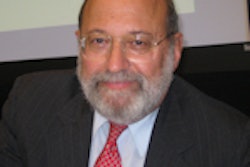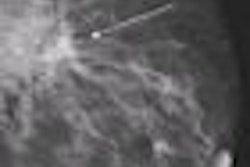CHICAGO - Screening mammography's benefits for women between the ages of 40 and 49 have been solidly proved, and as such, screening programs should not be dismantled, according to Dr. Stephen Feig, a highlighted speaker in the High-Risk Screening Breast Series presented Tuesday at the RSNA meeting.
Controversy over screening mammography -- sparked in part by the U.S. Preventive Services Task Force's (USPSTF) recent recommendation that mammography screening for women begin biennially at age 50 -- has clouded the facts, said Feig, the director of breast imaging at the University of California, Irvine and medical director of Aurora Breast MRI of Orange County. Feig outlined for attendees the science that confirms screening mammography's worth and addressed many of the stated concerns the USPSTF and other screening mammography critics have voiced.
Strong science
"We've known for many years that mammography will detect early-stage cancers that are missed by clinical breast examination and that women with these cancers have higher survival rates," Feig said. "We know screening works because randomized clinical trials have been conducted."
The World Health Organization (WHO) examined six randomized screening mammography trials for women 50 to 69 years old and found a 25% breast cancer mortality decrease in those who had been offered screening; among those who were actually screened, there was a 35% reduction in deaths, Feig said. Following the success of these trials, a number of counties in Scandinavia began to offer breast cancer screening as a public health measure and conducting service screening studies, which, although not randomized, could be compared to breast cancer mortality results in counties that did not establish these kinds of programs.
And individual trials have been conducted that show statistically significant data supporting the benefit of screening for women in their 40s with solid percentages of breast cancer mortality reduction:
- Health Insurance Plan of New York (1963 to 1966): 25%
- Malmö Mammographic Screening Trial (1988): 36%
- Gothenburg Breast Cancer Screening Trial (1997): 45%
"This is substantial data," Feig said.
There's consensus that breast cancers have variable growth rates, Feig said. Some grow quite fast, others slower. But to really catch the fast growing cancers, which are often found in younger women, screening needs to happen every year.
At Massachusetts General Hospital in Boston, researchers used a computer simulation method for estimating optimal screening intervals, Feig said. "They took cancer growth rates from tumor studies and put them into the model. What they estimated was that for every other year screening there was a 22% reduction in breast cancer mortality, while for annual screening, the mortality reduction was 51%. These calculations are consistent with what has been observed in randomized trials."
Feig referred again to the Gothenburg trial, which found that with 80% compliance and 18 month intervals, breast cancer mortality reduction was 45%; with 100% compliance at that interval, 55%. These percentages increased, however, when screening occurred every 12 months: 65% mortality reduction for 80% compliance and 75% for 100% compliance.
Adverse consequences?
Critics cite recall rates, overdiagnosis, radiation risk, and psychologic effects as negative aspects to screening mammography. Feig addressed each issue in turn:
- Although some research has found U.S. recall rates to hover around 7.5% -- twice as much as the U.K. -- more invasive cancers are identified in this country at a rate of 41% as compared to 26%, and thus the breast cancer mortality rates are lower.
- Ductal carcinoma in situ (DCIS) has been described as a slow growing, innocuous cancer that most often does not become invasive and, therefore, is overdiagnosed. Feig quoted a U.K. study that found DCIS to be 20% to 25% of the cancers diagnosed; of these, 60% were high grade, and 84% of these high-grade cases would become invasive in five years. "We've had similar findings in the U.S.," Feig said. "One study showed that 53% of DCIS has the potential to become invasive."
- It's known that women who have been exposed to extremely high doses of radiation have higher incidence of breast cancer. But "no woman has ever been shown to develop breast cancer as a result of participating in a mammography screening program," Feig said.
- The psychological effects of false-positive exams have been overblown, according to Feig: One study showed that 63% of women queried agreed that 500 or more false-positive results are acceptable for each life saved. "The stress of dying from breast cancer exceeds any stress from screening," Feig said.
In this era of healthcare reform, those involved in the task would do well to look at all the data instead of focusing on just one piece, according to Feig.
"The confusion, misunderstanding, and controversy caused [by the USPSTF recommendations] could have been avoided by simply having [the panel] read and understand the screening mammography literature and putting the health and well-being of our patients first," he said.
By Kate Madden Yee
AuntMinnie.com staff writer
December 2, 2009
Related Reading
ACR: Don't add USPSTF guidance to reform, November 24, 2009
Burden of proof: Breast cancer changes fall short, November 23, 2009
Breast guidelines test American tolerance for risk, November 23, 2009
Experts question motives of mammogram guidelines, November 17, 2009
USPSTF ups mammography screening age to 50, November 16, 2009
Copyright © 2009 AuntMinnie.com




















